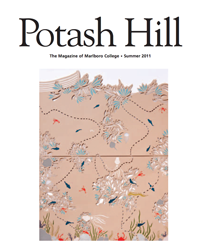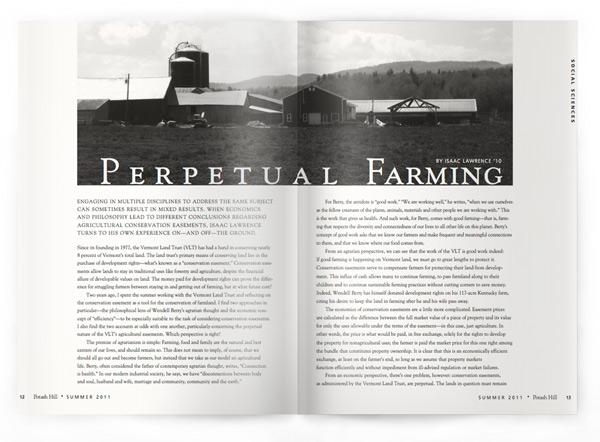
by Isaac Lawrence ’10
Engaging in multiple disciplines to address the same subject can sometimes result in mixed results. When economics and philosophy lead to different conclusions regarding agricultural conservation easements, Isaac Lawrence turns to his own experience on—and off—the ground.
Since its founding in 1977, the Vermont Land Trust (VLT) has had a hand in conserving nearly 8 percent of Vermont’s total land. The land trust’s primary means of conserving land lies in the purchase of development rights—what’s known as a “conservation easement.” Conservation easements allow lands to stay in traditional uses like forestry and agriculture, despite the financial allure of developable values on land. The money paid for development rights can prove the difference for struggling farmers between staying in and getting out of farming, but at what future cost?
Two years ago, I spent the summer working with the Vermont Land Trust and reflecting on the conservation easement as a tool for the conservation of farmland. I find two approaches in particular—the philosophical lens of Wendell Berry’s agrarian thought and the economic concept of “efficiency”—to be especially suitable to the task of considering conservation easements. I also find the two accounts at odds with one another, particularly concerning the perpetual nature of the VLT’s agricultural easements. Which perspective is right?
The premise of agrarianism is simple: Farming, food and family are the natural and best centers of our lives, and should remain so. This does not mean to imply, of course, that we should all go out and become farmers, but instead that we take as our model an agricultural life. Berry, often considered the father of contemporary agrarian thought, writes, “Connection is health.” In our modern industrial society, he says, we have “disconnections between body and soul, husband and wife, marriage and community, community and the earth.”
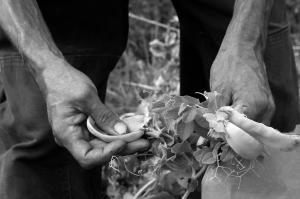 For Berry, the antidote is “good work.” “We are working well,” he writes, “when we use ourselves as the fellow creatures of the plants, animals, materials and other people we are working with.” This is the work that gives us health. And such work, for Berry, comes with good farming—that is, farming that respects the diversity and connectedness of our lives to all other life on this planet. Berry’s concept of good work asks that we know our farmers and make frequent and meaningful connections to them, and that we know where our food comes from.
For Berry, the antidote is “good work.” “We are working well,” he writes, “when we use ourselves as the fellow creatures of the plants, animals, materials and other people we are working with.” This is the work that gives us health. And such work, for Berry, comes with good farming—that is, farming that respects the diversity and connectedness of our lives to all other life on this planet. Berry’s concept of good work asks that we know our farmers and make frequent and meaningful connections to them, and that we know where our food comes from.
From an agrarian perspective, we can see that the work of the VLT is good work indeed: If good farming is happening on Vermont land, we must go to great lengths to protect it. Conservation easements serve to compensate farmers for protecting their land from development. This influx of cash allows many to continue farming, to pass farmland along to their children and to continue sustainable farming practices without cutting corners to save money. Indeed, Wendell Berry has himself donated development rights on his 117-acre Kentucky farm, citing his desire to keep the land in farming after he and his wife pass away.
The economics of conservation easements are a little more complicated. Easement prices are calculated as the difference between the full market value of a piece of property and its value for only the uses allowable under the terms of the easement—in this case, just agriculture. In other words, the price is what would be paid, in free exchange, solely for the rights to develop the property for nonagricultural uses; the farmer is paid the market price for this one right among the bundle that constitutes property ownership. It is clear that this is an economically efficient exchange, at least on the farmer’s end, so long as we assume that property markets function efficiently and without impediment from ill-advised regulation or market failures.
From an economic perspective, there’s one problem, however: conservation easements, as administered by the Vermont Land Trust, are perpetual. The lands in question must remain in farming forever. What if consumer preferences change in the future, and farming is no longer the most efficient use of the land? We can already assert that farming in the northeastern United States is a difficult, often inefficient, process. Even now, our desire to save farmland must be chalked up to cultural identity, or to aesthetics, or to some moral virtue associated with farming. What if, in the future, our willingness to pay for these things diminishes relative to some other use of the land? “Better” uses of conserved lands may well arise as preferences change, and there is a likelihood, quite high over a long time frame, that these uses will be more economically efficient. By limiting the opportunity of future generations to enact different sets of values on Vermont land, the VLT takes away what may be a very important right of future generations.
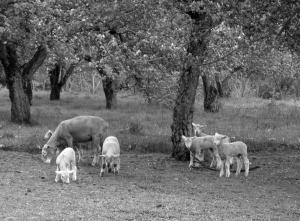 The difference between agrarian and economic perspectives on conservation easements hinges on this very issue. Agrarian thought suggests that there are some lasting values in natural systems, in what Berry calls the “Great Economy.” If these values exist outside of humanity, then they will continue to exist into the future, regardless of changes to humanity. In this, the perpetual nature of conservation easements is endorsed.
The difference between agrarian and economic perspectives on conservation easements hinges on this very issue. Agrarian thought suggests that there are some lasting values in natural systems, in what Berry calls the “Great Economy.” If these values exist outside of humanity, then they will continue to exist into the future, regardless of changes to humanity. In this, the perpetual nature of conservation easements is endorsed.
Economics, on the other hand, is concerned only with human wants. What is good, in terms of maximizing utility, is what is good for humanity. The good life is one of maximal utility for humans. As such, small-scale farming is only useful as long as we take it be so—as long as there are not uses of our scarce resources that we find more fruitful. For example, if we find that we would rather spend our time making art, or building cities, than farming, we may find that we would prefer to mechanize farm work, to disengage from the sources of our food and the like.
My experience on the ground with farmers working with the Vermont Land Trust has some bearing here. On one particular day, all three of the farmers we talked to recalled some initial hesitancy in the easement process. Giving up their rights to do what they will with the land ran counter to what I took to be a real premium on autonomy. The easement had been something of a compromise for each of them, and each had different ends in mind. What was shared was a deep respect for the land and for farming as a lifestyle. None of the farmers I spoke with wanted to see their farm get cut up into lots for houses, or sold for condominium development. They all expressed concern for the environmental health of their property. The conservation easement seemed a great conciliatory mechanism, and the farmers struck me as admirable for their hard work, for their commitment to good land use and for their practicality.
When we arrived at the third farm, we first went to take pictures that we would need to pitch the Project to the Vermont Housing and Conservation Board for funding. My supervisor thought it would be best to get a shot from above, and the crow’s nest at the top of the silo seemed the best place. He climbed the narrow ladder on the outside of the structure with what I later learned was characteristic energy and athleticism. Coming down, he assured me that I too needed to climb up, for the view. Afraid, I started up. Just as the drop below became utterly terrifying, the ladder acquired a cage, and only because of this was I able to get to the top. The view was, as my boss had suggested, spectacular. It was a perfect early July, Addison County day, and my view extended across miles of picturesque rolling farmland, with Lake Champlain and the Adirondacks in the distance. As a lifetime Vermonter, a descendent of Vermont dairy farmers on both sides, and as a longtime lover of the outdoors, I found the sight stirring.
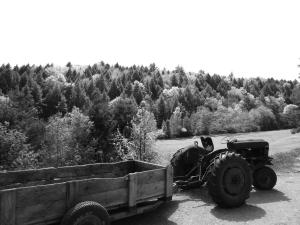 Not surprisingly, my past predisposes me to some sympathy for Berry’s account and for perpetual conservation easements on farms—future generations’ potentially different wants be damned. At the same time, I also have great sympathy for the economic account: It suggests that what matters most is the aggregate welfare of all the people affected by a particular decision, rather than considering one person’s values more important than another’s. Which perspective is right?
Not surprisingly, my past predisposes me to some sympathy for Berry’s account and for perpetual conservation easements on farms—future generations’ potentially different wants be damned. At the same time, I also have great sympathy for the economic account: It suggests that what matters most is the aggregate welfare of all the people affected by a particular decision, rather than considering one person’s values more important than another’s. Which perspective is right?
In this case I can confidently say that preserving farmland for small, conscientious farmers is likely to be a good thing long into the future. My meetings with farmers left me with the feeling that, for a multitude of reasons, conservation easements were good for farmers and, for reasons like those that Berry articulated, for Vermont and Vermonters in general. Only my experience was capable of differentiating the two analytical frameworks I thought equally relevant to VLT’s work. This experience instills in me a powerful belief that the work of small, responsible farmers is valuable and, therefore, worth preserving.
Isaac Lawrence graduated in 2010 with a Plan in economics and philosophy, focusing on environmental management. He is now doing regional planning as an AmeriCorps VISTA volunteer in Montpelier, Vermont, and will begin a master’s program in urban and regional planning in the fall.
Guitar Economy
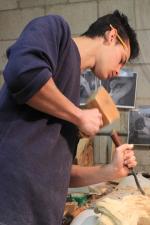 While agrarian ideals conserve rural landscapes, “craft” ideals offer alternatives to struggling urban communities. John Whelan ’11 says, “The creative economy is a model for economic development applicable to de-industrialized communities, communities once reliant on older industrial structures such as the mills in New England.” John’s Plan explores the role of craft production, specifically guitar making, in the creative economy of southern Vermont, and compares the values of local luthiers to those of veteran producers like Gibson, Fender and Taylor. “Those large-scale producers aim to preserve a reputation that embraces some craft ideals, and also play an important role in the creative economy,” John says. What they typically lack, which he finds among local instrument makers, is a high level of community engagement crucial to a successful creative economy model. Go to our website to see a video of John describing his Plan work .
While agrarian ideals conserve rural landscapes, “craft” ideals offer alternatives to struggling urban communities. John Whelan ’11 says, “The creative economy is a model for economic development applicable to de-industrialized communities, communities once reliant on older industrial structures such as the mills in New England.” John’s Plan explores the role of craft production, specifically guitar making, in the creative economy of southern Vermont, and compares the values of local luthiers to those of veteran producers like Gibson, Fender and Taylor. “Those large-scale producers aim to preserve a reputation that embraces some craft ideals, and also play an important role in the creative economy,” John says. What they typically lack, which he finds among local instrument makers, is a high level of community engagement crucial to a successful creative economy model. Go to our website to see a video of John describing his Plan work .

